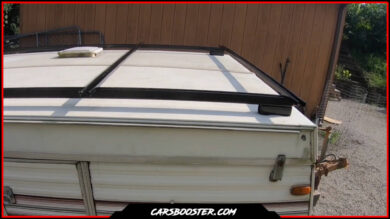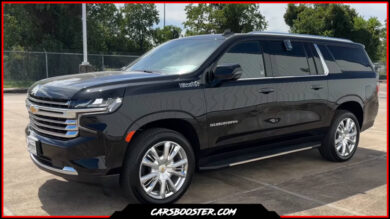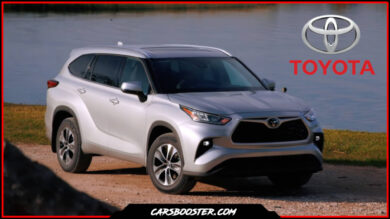
If you desire expanded storage while traveling in your car, car roof rails could possibly satisfy those wishes by providing supplementary room for things that wouldn’t easily fit inside the auto.
Here in this article, we’ll describe the advantages associated with car roof rails and introduce different models available to you. I’ll then cover techniques to aid in finding the ideal choice that caters to your unique wants.
We’ll also provide instructions on the proper installation of these rails, common errors to avoid during the process, maintenance guidelines, and the option of using a rooftop carrier without them. Additionally, we’ll touch upon pricing information as well as answers to some commonly asked queries about roof rails and their accessories.
Benefits of Car Roof Rails
Car roof rails offer numerous benefits to car owners, including:
- Extra storage space: Car roof rails provide additional space to carry bulky items such as sports equipment, bikes, and luggage.
- Improved safety: Car roof rails help to secure your luggage and prevent it from moving or falling off while driving.
- Easy installation: Car roof rails are easy to install and can be done by anyone with basic mechanical skills.
Overall, car roof rails can make your life easier and help you enjoy your road trips without worrying about luggage space.
Types of Car Roof Rails
There are several types of car roof rails available in the market, including:
- Bolt-on roof rails: These roof rails are permanently attached to your car’s roof using bolts and screws.
- Clamp-on roof rails: These roof rails are attached to your car’s roof using clamps that grip onto the roof’s edges.
- Factory-installed roof rails: Some cars come with factory-installed roof rails that are already attached to the roof of the car.
There are varied roof rail options with respective strengths and weaknesses; it is important to evaluate each alternative based on your specific requirements and financial situation before making a decision.
How to Choose the Right Car Roof Rails
When choosing car roof rails, you should consider the following factors:
- The type of roof rails that are compatible with your car
- The weight capacity of the roof rails
- The length and width of the roof rails
- The material of the roof rails
- The price of the roof rails
It is important to choose roof rails that are compatible with your car and have a weight capacity that can support the weight of your luggage.
Variables like dimensions, materials used, and cost must all be considered when selecting car roof rails. This includes evaluating factors such as the length and breadth of the rails, along with their construction materials, and prices that range from affordable to steep.
Installation Process of Car Roof Rails
The installation process of car roof rails depends on the type of roof rails you have. Bolt-on roof rails require drilling and screwing into the roof of the car, while clamp-on roof rails can be attached using clamps that grip onto the roof’s edges. Factory-installed roof rails are already attached to the car and do not require any installation.
Adherence to the manufacturer’s guide is crucial to safeguard against any potential harm to your automobile during the installation process and to guarantee that everything is correctly installed.
Common Mistakes to Avoid While Installing Car Roof Rails
Some common mistakes that people make while installing car roof rails include:
- Not following the manufacturer’s instructions
- Over-tightening the bolts or clamps
- Not checking the weight capacity of the roof rails
- Not securing the luggage properly
To avoid any damage to your car or your luggage, it is important to follow the manufacturer’s instructions, check the weight capacity of the roof rails, and secure the luggage properly.
Cleaning and Maintaining Your Car Roof Rails
Keeping your car roof rails clean and maintained can extend their lifespan and ensure optimal performance. Here are some tips:
- Clean the roof rails regularly with soap and water
- Remove any dirt or debris that may accumulate on the roof rails
- Check the bolts or clamps regularly and tighten them if necessary
- Inspect the roof rails for any signs of damage or wear and tear
By following these tips, you can keep your car roof rails in good condition and ensure that they provide the best performance for years to come.
Can You Install a Roof Rack on a Car Without Rails?
Yes, you can install a roof rack on a car without rails. A variety of roof rack designs exist for purchase and attach to vehicles via various methods other than roof rails, such as straps, suction cups, or clamps.
It is critical to pick out a rack that matches your car make/model and possesses adequate load-bearing capabilities to accommodate any loads carried.
Cost of Car Roof Rails and Roof Racks
The cost of car roof rails and roof racks varies depending on the type and brand. Bolt-on roof rails can cost anywhere from $50 to $500, while clamp-on roof rails can cost between $100 to $300. Factory-installed roof rails are usually included in the price of the car. Roof racks can cost anywhere from $50 to $500, depending on the type and brand.
FAQs
Here are some frequently asked questions about car roof rails:
Can I install roof rails myself?
Yes, you can install roof rails yourself if you have basic mechanical skills and follow the manufacturer’s instructions.
Do all cars come with roof rails?
No, not all cars come with roof rails. Some cars have factory-installed roof rails, while others require aftermarket roof rails.
Can I use roof rails for carrying kayaks?
Yes, roof rails can be used for carrying kayaks, but you should also use a kayak carrier or a kayak roof rack to secure the kayak properly.
Conclusion
Car roof rails offer numerous advantages like increased cargo room, improved security, heightened aerodynamics, and effortless setup. Before deciding on a particular model, there are key points to take into consideration such as suitability for your particular automobile, weight limit, size, product materials, and overall expense.
Installing car roof rails requires following the manufacturer’s instructions and avoiding common mistakes such as over-tightening the bolts or clamps. To keep your car roof rails in good condition, clean and maintain them regularly.
Even if your car lacks preinstalled roof rails, installing a roof rack tailored to work with your specific make/model remains feasible. The cost of car roof rails and roof racks varies depending on the type and brand.
We hope our content here was useful in providing knowledge regarding car roof rails and assisted in making choices regarding future vacations.



